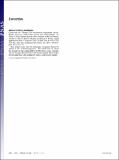| dc.contributor.author | Jeon, Jessie S. | |
| dc.contributor.author | Bersini, Simone | |
| dc.contributor.author | Gilardi, Mara | |
| dc.contributor.author | Dubini, Gabriele | |
| dc.contributor.author | Charest, Joseph L. | |
| dc.contributor.author | Moretti, Matteo | |
| dc.contributor.author | Kamm, Roger Dale | |
| dc.date.accessioned | 2015-08-05T16:14:35Z | |
| dc.date.available | 2015-08-05T16:14:35Z | |
| dc.date.issued | 2015-01 | |
| dc.date.submitted | 2014-09 | |
| dc.identifier.issn | 0027-8424 | |
| dc.identifier.issn | 1091-6490 | |
| dc.identifier.uri | http://hdl.handle.net/1721.1/98037 | |
| dc.description.abstract | A key aspect of cancer metastases is the tendency for specific cancer cells to home to defined subsets of secondary organs. Despite these known tendencies, the underlying mechanisms remain poorly understood. Here we develop a microfluidic 3D in vitro model to analyze organ-specific human breast cancer cell extravasation into bone- and muscle-mimicking microenvironments through a microvascular network concentrically wrapped with mural cells. Extravasation rates and microvasculature permeabilities were significantly different in the bone-mimicking microenvironment compared with unconditioned or myoblast containing matrices. Blocking breast cancer cell A[subscript 3] adenosine receptors resulted in higher extravasation rates of cancer cells into the myoblast-containing matrices compared with untreated cells, suggesting a role for adenosine in reducing extravasation. These results demonstrate the efficacy of our model as a drug screening platform and a promising tool to investigate specific molecular pathways involved in cancer biology, with potential applications to personalized medicine. | en_US |
| dc.description.sponsorship | National Cancer Institute (U.S.) (Grant R33 CA174550-01) | en_US |
| dc.description.sponsorship | National Cancer Institute (U.S.) (Grant R21 CA140096) | en_US |
| dc.description.sponsorship | Italian Ministry of Health | en_US |
| dc.description.sponsorship | Charles Stark Draper Laboratory (Fellowship) | en_US |
| dc.language.iso | en_US | |
| dc.publisher | National Academy of Sciences (U.S.) | en_US |
| dc.relation.isversionof | http://dx.doi.org/10.1073/pnas.1417115112 | en_US |
| dc.rights | Article is made available in accordance with the publisher's policy and may be subject to US copyright law. Please refer to the publisher's site for terms of use. | en_US |
| dc.source | National Academy of Sciences (U.S.) | en_US |
| dc.title | Human 3D vascularized organotypic microfluidic assays to study breast cancer cell extravasation | en_US |
| dc.type | Article | en_US |
| dc.identifier.citation | Jeon, Jessie S., Simone Bersini, Mara Gilardi, Gabriele Dubini, Joseph L. Charest, Matteo Moretti, and Roger D. Kamm. “Human 3D Vascularized Organotypic Microfluidic Assays to Study Breast Cancer Cell Extravasation.” Proc Natl Acad Sci USA 112, no. 1 (December 18, 2014): 214–219. | en_US |
| dc.contributor.department | Massachusetts Institute of Technology. Department of Biological Engineering | en_US |
| dc.contributor.department | Massachusetts Institute of Technology. Department of Mechanical Engineering | en_US |
| dc.contributor.mitauthor | Jeon, Jessie S. | en_US |
| dc.contributor.mitauthor | Kamm, Roger Dale | en_US |
| dc.relation.journal | Proceedings of the National Academy of Sciences | en_US |
| dc.eprint.version | Final published version | en_US |
| dc.type.uri | http://purl.org/eprint/type/JournalArticle | en_US |
| eprint.status | http://purl.org/eprint/status/PeerReviewed | en_US |
| dspace.orderedauthors | Jeon, Jessie S.; Bersini, Simone; Gilardi, Mara; Dubini, Gabriele; Charest, Joseph L.; Moretti, Matteo; Kamm, Roger D. | en_US |
| dc.identifier.orcid | https://orcid.org/0000-0002-7232-304X | |
| mit.license | PUBLISHER_POLICY | en_US |
| mit.metadata.status | Complete | |
